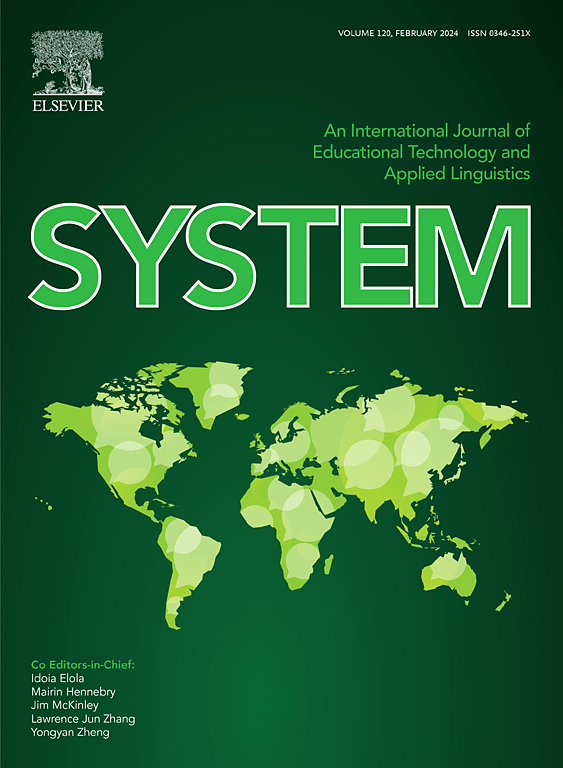Feeding amylolytic and fibrolytic exogenous enzymes in feedlot diets: effects on ruminal parameters, nitrogen balance and microbial diversity of Nellore cattle
IF 6.5
1区 农林科学
Q1 Agricultural and Biological Sciences
引用次数: 0
Abstract
The environmental impact of feedlot operations is a growing concern, as cattle excrete a significant portion of feed nutrients as waste. Exogenous feed enzymes (EFE) have gained interest for their potential to enhance feed efficiency in ruminants by improving nutrient digestion. However, EFE effects on ruminal parameters have shown inconsistencies, with limited research on nitrogen metabolism and rumen microbiome impacts. Moreover, the synergistic effects of combining different EFEs remain unclear. This study aimed to evaluate the effects of individual and combined EFE products in feedlot diets on ruminal fermentation parameters, nitrogen metabolism, and ruminal microbial communities. Ten rumen-cannulated Nellore steers [543 ± 28.6 kg of body weight (BW)] were distributed in a replicated Latin-square design (5 × 5) in individual pens. Treatments included: control (CON, no EFE supplementation), amylase [AML, 0.5 g/kg of diet dry matter (DM)], xylanase (FBL, 0.9 g/kg DM), half dose combination (HD, 0.25 g of AML + 0.45 g of FBL/kg of DM), and full dose combination (FD, 0.5 g of AML + 0.90 g of FBL/kg of DM). The experimental period lasted 19 d and included total urine and feces collection (d 15 to 18) and rumen fluid sampling (d 19) at 0, 4, 8, 12, and 16 h post-feeding for ammonia, volatile fatty acids (VFA), pH and microbiome analysis. EFE supplemented animals exhibited lower ruminal ammonia concentrations (P = 0.040), and higher acetate proportions (P < 0.001) compared to the control group. EFE supplementation resulted in reduced nitrogen (N) excretion in feces (P = 0.049) and urine (P = 0.036), contributing to improved N retention and efficiency (P = 0.045). Additionally, EFE products induced shifts in various microbial taxa at family and genera levels (P ≤ 0.10), which may be associated with the changes observed in ruminal fermentation. Our findings demonstrate that EFE supplementation enhances nitrogen retention, reduces ruminal ammonia, and alters ruminal fermentation profiles and microbial populations in feedlot cattle. While the expected synergism between amylase and xylanase did not significantly impact rumen fermentation parameters, it did induce shifts in the rumen microbiome. These results suggest that EFE supplementation may be a promising strategy for improving nutrient utilization and potentially reducing the environmental impact of feedlot operations.饲粮中添加淀粉和纤维分解外源酶:对Nellore牛瘤胃参数、氮平衡和微生物多样性的影响
饲养场运营对环境的影响日益受到关注,因为牛排泄的饲料营养物质中有很大一部分是废物。外源性饲料酶(EFE)因其通过改善营养物质消化而提高反刍动物饲料效率的潜力而受到关注。然而,EFE对瘤胃参数的影响并不一致,对氮代谢和瘤胃微生物组影响的研究有限。此外,不同efe组合的协同效应尚不清楚。本试验旨在评价饲粮中单独和组合EFE产品对瘤胃发酵参数、氮代谢和瘤胃微生物群落的影响。试验选用10头瘤胃空心阉牛(543±28.6 kg体重),采用重复拉丁方设计(5 × 5)分栏饲养。处理包括:对照(CON,不添加EFE)、淀粉酶[AML, 0.5 g/kg日粮干物质]、木聚糖酶(FBL, 0.9 g/kg DM)、半剂量组合(HD, 0.25 g AML + 0.45 g FBL/kg DM)和全剂量组合(FD, 0.5 g AML + 0.90 g FBL/kg DM)。试验期19 d,分别于饲喂后0、4、8、12和16 h采集全尿、全粪(第15 ~ 18 d)和瘤胃液(第19 d),测定氨、挥发性脂肪酸(VFA)、pH和微生物组。与对照组相比,饲粮中添加EFE的动物瘤胃氨浓度较低(P = 0.040),乙酸比例较高(P < 0.001)。饲粮中添加EFE可降低粪便(P = 0.049)和尿液(P = 0.036)的氮排泄量,提高氮的滞留率和效率(P = 0.045)。此外,EFE产品在科和属水平上诱导了各种微生物类群的变化(P≤0.10),这可能与瘤胃发酵中观察到的变化有关。我们的研究结果表明,饲粮中添加EFE可以提高养牛的氮潴留,减少瘤胃氨,并改变瘤胃发酵剖面和微生物种群。虽然预期的淀粉酶和木聚糖酶之间的协同作用并没有显著影响瘤胃发酵参数,但它确实引起了瘤胃微生物组的变化。这些结果表明,补充EFE可能是一种有希望的策略,可以提高养分利用率,并有可能减少饲养场运营对环境的影响。
本文章由计算机程序翻译,如有差异,请以英文原文为准。
求助全文
约1分钟内获得全文
求助全文
来源期刊

Journal of Animal Science and Biotechnology
AGRICULTURE, DAIRY & ANIMAL SCIENCE-
CiteScore
9.90
自引率
2.90%
发文量
822
审稿时长
17 weeks
期刊介绍:
Journal of Animal Science and Biotechnology is an open access, peer-reviewed journal that encompasses all aspects of animal science and biotechnology. That includes domestic animal production, animal genetics and breeding, animal reproduction and physiology, animal nutrition and biochemistry, feed processing technology and bioevaluation, animal biotechnology, and meat science.
 求助内容:
求助内容: 应助结果提醒方式:
应助结果提醒方式:


